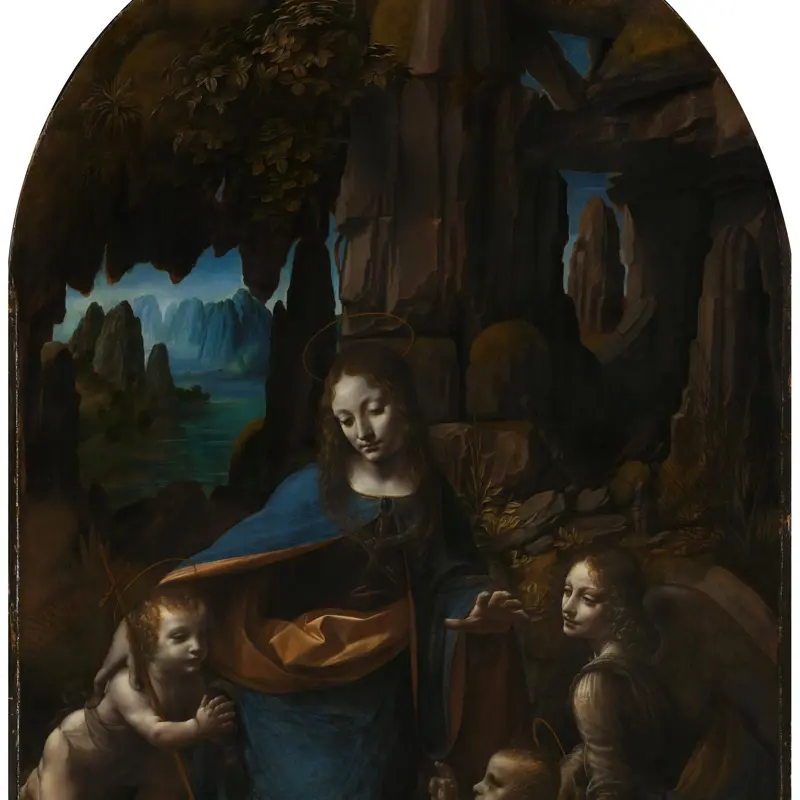The National Gallery Collection celebrates one artistic form: painting. For centuries, painters have summoned entire worlds with just a few powdered pigments bound together in a liquid medium. The Medieval and Early Renaissance galleries present the earlier works in the collection, spanning the 13th to the early 16th centuries. Painting came of age during this time. It moved from manuscript illumination to images on panel and canvas, overtaking metalwork, tapestry and sculpture as the most popular and prestigious art form in Europe.
Painting’s rise in status was due to all the things it can do. It can tell complex stories, convey human emotions, fool the eye, capture a likeness, make viewers laugh, weep, pray and think. This room provides a sample of those achievements and the various functions painting fulfilled.
Some smaller works, such as the Wilton Diptych, were made for private prayer while others, like Leonardo da Vinci’s Virgin of the Rocks, served as public altarpieces, providing a visual focus for Christian ritual. Legends of divinely made images reflect the near-miraculous power that painting was believed to have.














